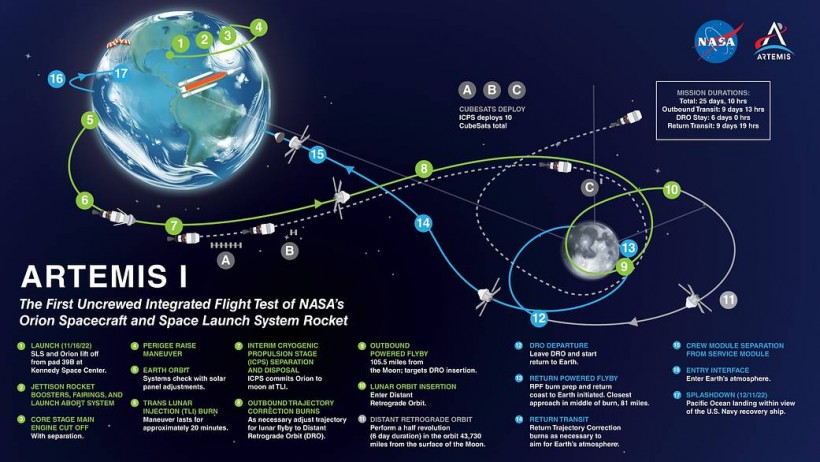After its successful journey on the lunar orbit, the Orion spacecraft is finally making its way back. It aims to have a successful splashdown by the weekend in the Pacific Ocean, which will determine whether the spacecraft can endure 3,000C heat from friction and pressure. Absolute success will signify that it's time for the next step in the Artemis program.
Setting Records
Aside from the fact that the Orion capsule was on top of the most powerful rocket in the world, Its extended loop around the Moon reached 430,000km. This is by far, the farthest a spacecraft designed for humans have traveled. It will make its way back to Earth at 39,500km/h, which according to BBC, is faster than the speed of a spacecraft from the International Space Station.
The mission will serve as proof that humankind is ready to travel farther in space, giving us the opportunity to study what's out of this world. Once the Artemis 1 mission is completed without a hitch, astronauts will be aboard the next mission, Artemis 2, in no time. The Artemis 3 will bring humans back to the Moon, which will be the first time since the moon landing 50 years ago.
With our fingers crossed, the spacecraft will hopefully make a successful splashdown, which will be off the California coast. The capsule is protected by a heat shield, and holds 11 parachutes that will be deployed to decrease the speed of re-entry. NASA sees this part of the mission as a priority, since it determines the spacecraft's safety for the astronauts it will carry soon.

Read Also: 10 Things To Know About the Artemis Program and the Next Moon Landing
The Future of the Artemis Mission
The goal of the US space agency is to send humans 40,000 miles beyond the Moon, which has never been done before in space history. This will prepare humans for the next big step to take, which is to explore Mars. With the Artemis 1 mission close to success, Artemis 2 is not that far ahead in NASA's plans.
The Artemis 2's crew module will hold four astronauts, wherein they will remain for 21 days. It can sustain all the humans aboard with its life support, avionics, power systems, and advanced manufacturing techniques. Environmental control and life support will ensure that the cabin temperature, pressure, humidity, oxygen, and more, will keep the astronauts healthy.
The Artemis 2 still won't go past or land on the Moon. It will orbit the satellite to test out systems, which will let NASA know what will be needed in future missions. Artemis 3 will see astronauts on the Moon, assisted by a commercially built Human Landing System. One of the best parts about the Orion capsule is that it's a reusable spacecraft, giving humans the potential to return out there.
This Artemis missions will not only land us on the Moon, but it will also establish a foothold. NASA plans to build an Artemis Base Camp. This will serve as a home for the astronauts, who will help study the Moon, Earth, and the history of the solar system, as mentioned by NASA.
Related: 10 More Things to Know About the Artemis 1 Moon Mission














